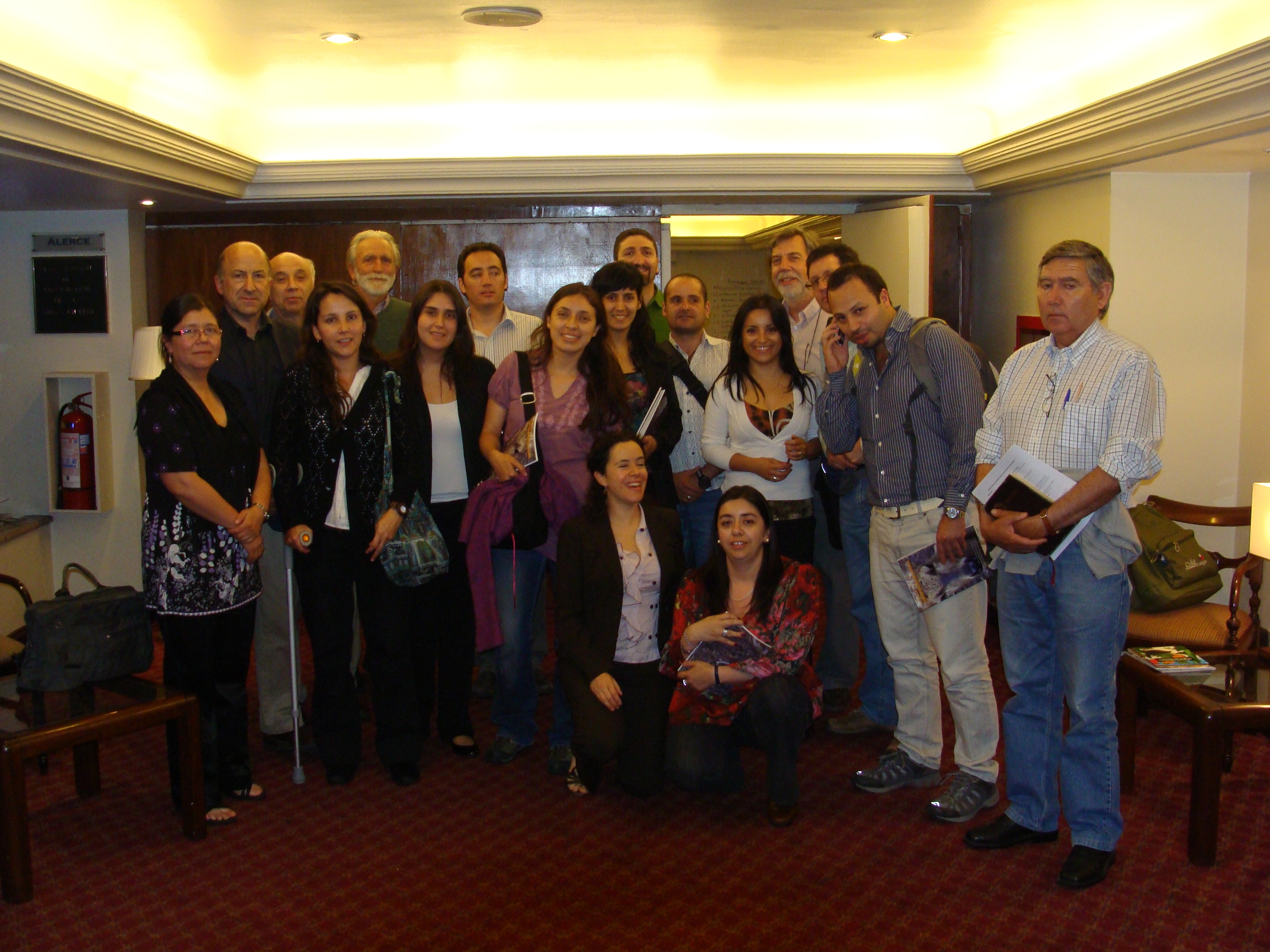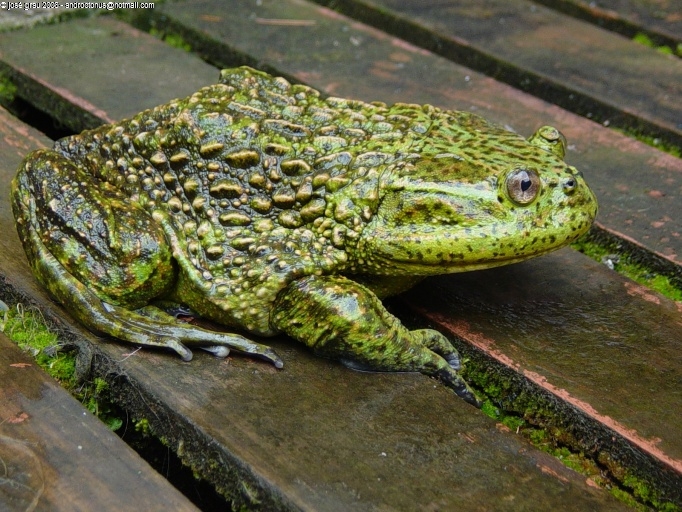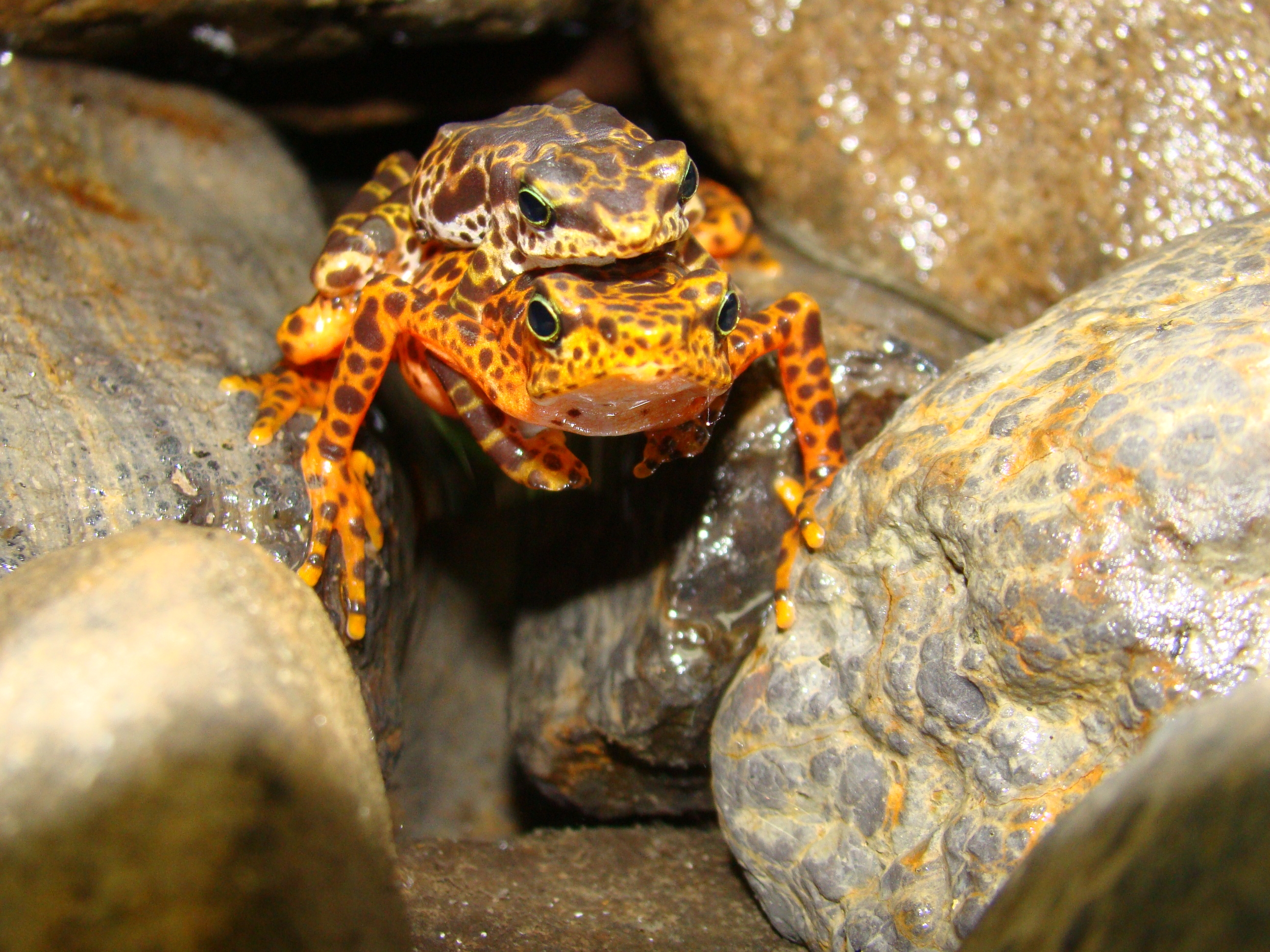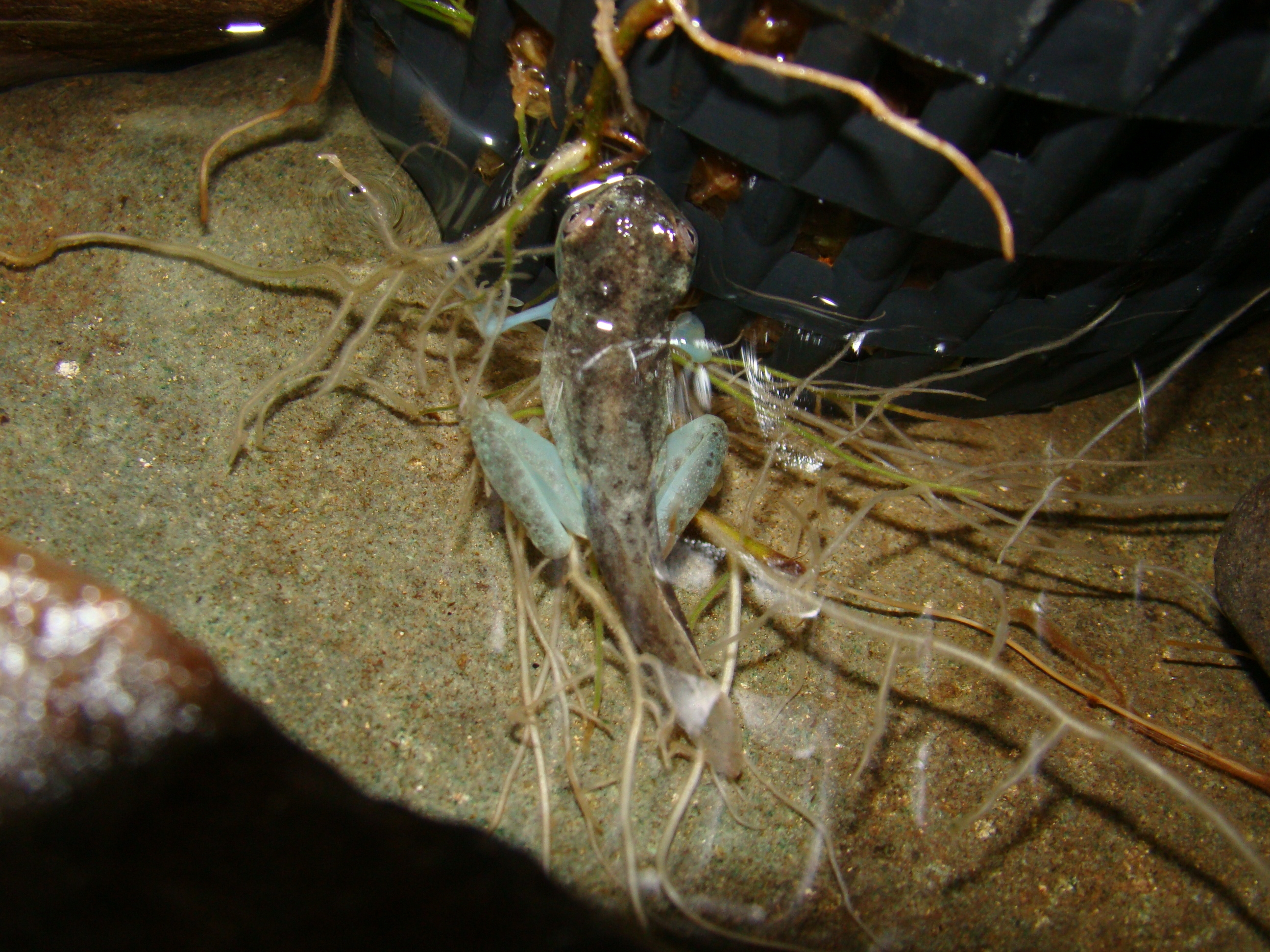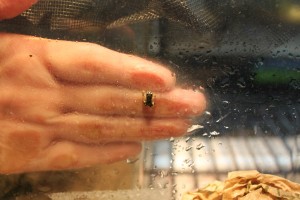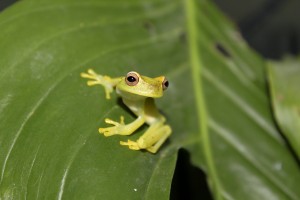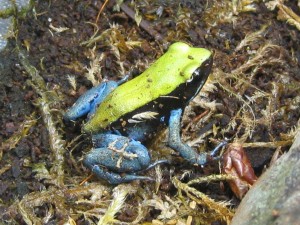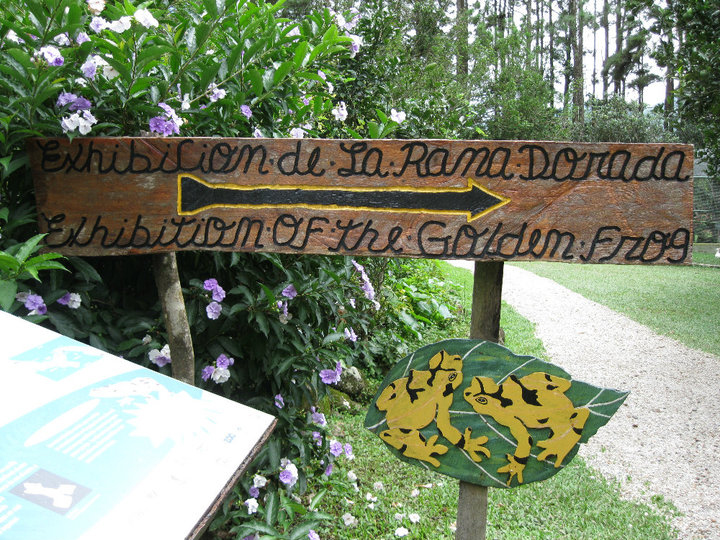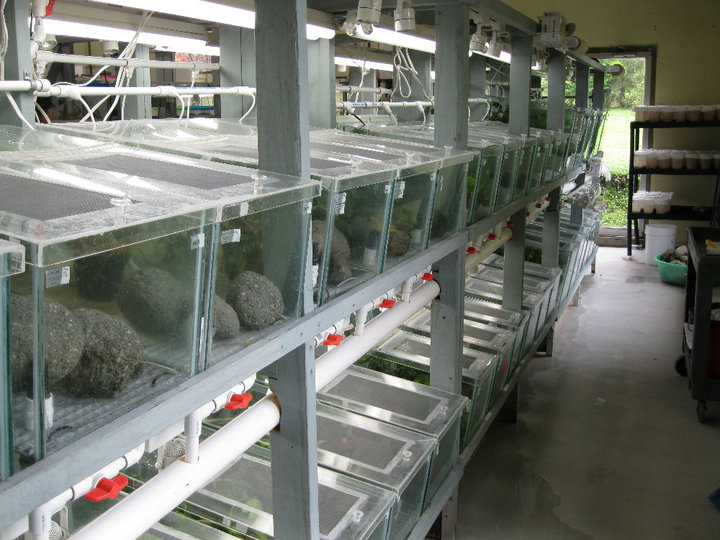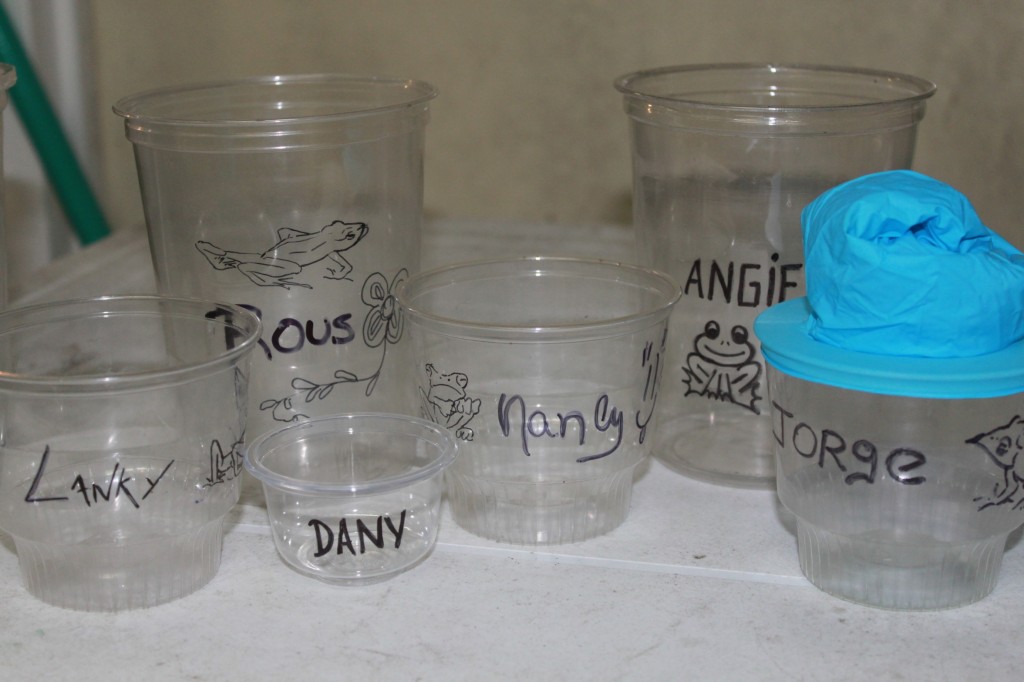Endangered species across the world have found allies in a neat partnership between MacQuarrie Byrne Films, Carnegie Mellon University and the University of Tennessee. The idea behind the Sixth Extinction in Motion project is to use communication/graphic design to play an active role in changing the course of history, specifically in curbing the terrifyingly rapid extinction rate. According to the Sixth Extinction’s blog, “Communication designers have the power to persuade, educate and inform populations of people on the massive dying-off of our planet.”
While the students involved in the project have created a number of really impressive and compelling videos, we were, of course, most interested in their four frog videos. We are thankful to the students who designed these as they are generously helping us promote the rescue project. Those videos are below, with a brief Q&A by each student who created them. Once you’ve watched these, make sure to check out more of their work here.
Future Generations by Trista Busch (University of Tennessee)
Where did you come up with the idea for your video?
After extensive research into the initial problem of the endangerment of amphibians, I decided to focus on the most prevalent and immediate issues affecting the species. Pollution and environmental problems are occurrences that we can all combat, or support research for the fight against the extinction of such important creatures to our ecosystem. Because frogs are a cherished part of my childhood, I decided to focus my efforts on illustrating the destructiveness of pollution on our children’s future memories, and how that in turn will affect the outcome of our efforts.
Why is it important to get this message out there?
Misinformation of existing environmental issues is almost more detrimental than ignorance. Spreading knowledge is the first step in the right direction. Without being well informed, we are not able to recognize and address the problem.
What was the most surprising thing that you learned in your research?
Well, one third of the amphibian populations are endangered! If amphibians were to go extinct the occurrence would be the greatest mass extinction since the dinosaurs.
What do you hope people take away from your video?
I can only hope that people feel a sense of urgency in this pressing matter and at least walk away a little more informed and motivated to contribute.
Vanishing by Samia Ahmed (Carnegie Mellon University)
Where did you come up with the idea for your video?
After spending time researching frogs and their extinction, I became very aware of the lack of frogs in my life–the last time I remember hearing the sound of a frog in the wild was in elementary school. I wanted to focus on that iconic sound because it is something immersive that hopefully lets the viewer “feel” the loss of frog populations as opposed to just reading about it.
Why is it important to get this message out there?
I think it’s important to learn about things like this because the more time I spend learning about animal extinction, the more I see how our actions on a personal level of simply conserving energy and resources, as well as on government level of policy and regulation have far reaching results, a lot of which are the destruction of life.
What was the most surprising thing that you learned in your research?
I was most surprised at learning about the alarming rate of loss for frog populations. It’s so easy to not see the things we are losing until they are gone.
What do you hope people take away from your video?
I hope that people remember that there is a bigger picture out there and that there are complexities to the results of our actions whether we intend them or not.
When Frogs are Gone by Janeane Robinson (University of Tennessee)
Where did you come up with the idea for your video?
I wanted to base my video on plain facts. Since it’s not a problem that not many are familiar with, it’s the facts that hit the hardest. The decision to show no actual frogs or amphibians and just focus on type and audio was an easy one for me. I’ve always liked the audio aspect of videos and how haunting it can be. The sound of frogs is somewhat nostalgic for most people and I wanted to play on this.
Why is it important to get this message out there?
It’s important for people to realize that their actions, and sometimes inactions, do have affects on others. I believe that every living thing has a purpose–one that we might not even be aware of yet. When we start making decisions with no regard to life, everything starts to break down. Everything is connected, and when one life is taken it sets off a chain reaction. Our only hope for a future is taking care of the lives we have in the present.
What was the most surprising thing you learned in your research?
Never would I have guessed that frogs, and the entire amphibian race, were going extinct. It’s something that never crossed my mind or was ever brought to my attention. When I started researching, I was shocked at how large and widespread this problem actually is. This is the biggest obstacle. Once more people become familiar with the problem, we have a chance to fix it.
What do you hope people take away from your video?
I hope that this brings awareness to the people, who like me, don’t even realize there’s a problem. Awareness is the first step in solving a problem, but I feel it’s also the easiest. It’s much harder to move people to take responsibility for behaviors and actions that may be affecting others. However, by planting a little seed of awareness, I hope it pushes people to making more conscious decisions.
Green-Eyed Frogs by Frances Soong (Carnegie Mellon University)
Where did you come up with the idea for your video?
From the start, I had been fascinated by the fact that frogs are so sensitive to the changes in their surroundings as they breathe and absorb toxins through their skin—acting as the new “canaries in the coal mine.” I wanted to make sure my video made that connection between frogs and the world and conveyed the idea that a “sick frog” meant a “sick world.”
Why is it important to get this message out there?
There are a lot of animals and ecosystems dying and in need of saving (as you can see by looking at the videos from the rest of our classes), but I think this direct connection they have with their environment is unique to frogs and other amphibians. It makes them all that more significant too.
What was the most surprising thing that you learned in your research?
The most surprising thing was definitely finding out how low the numbers actually were for the frog population, especially when compared to the number of people on this planet. Other things like causes for the frog and amphibian population declines was a lot harder to pinpoint… at some point I was totally sure chytrid fungus was the cause of everything and then I looked into the causes of that… it’s a never-ending process.
What do you hope people take away from your video?
In my video, I basically tell people to consume less, stop using cars, and to stop wasting energy and resources to save the frogs. But even if you didn’t think frogs were that cute or that saving them was that important before, I hope that knowing how frogs fit in the larger picture of the world will motivate more people to want to do learn more and do more in general.
—Lindsay Renick Mayer, Smithsonian’s National Zoo

